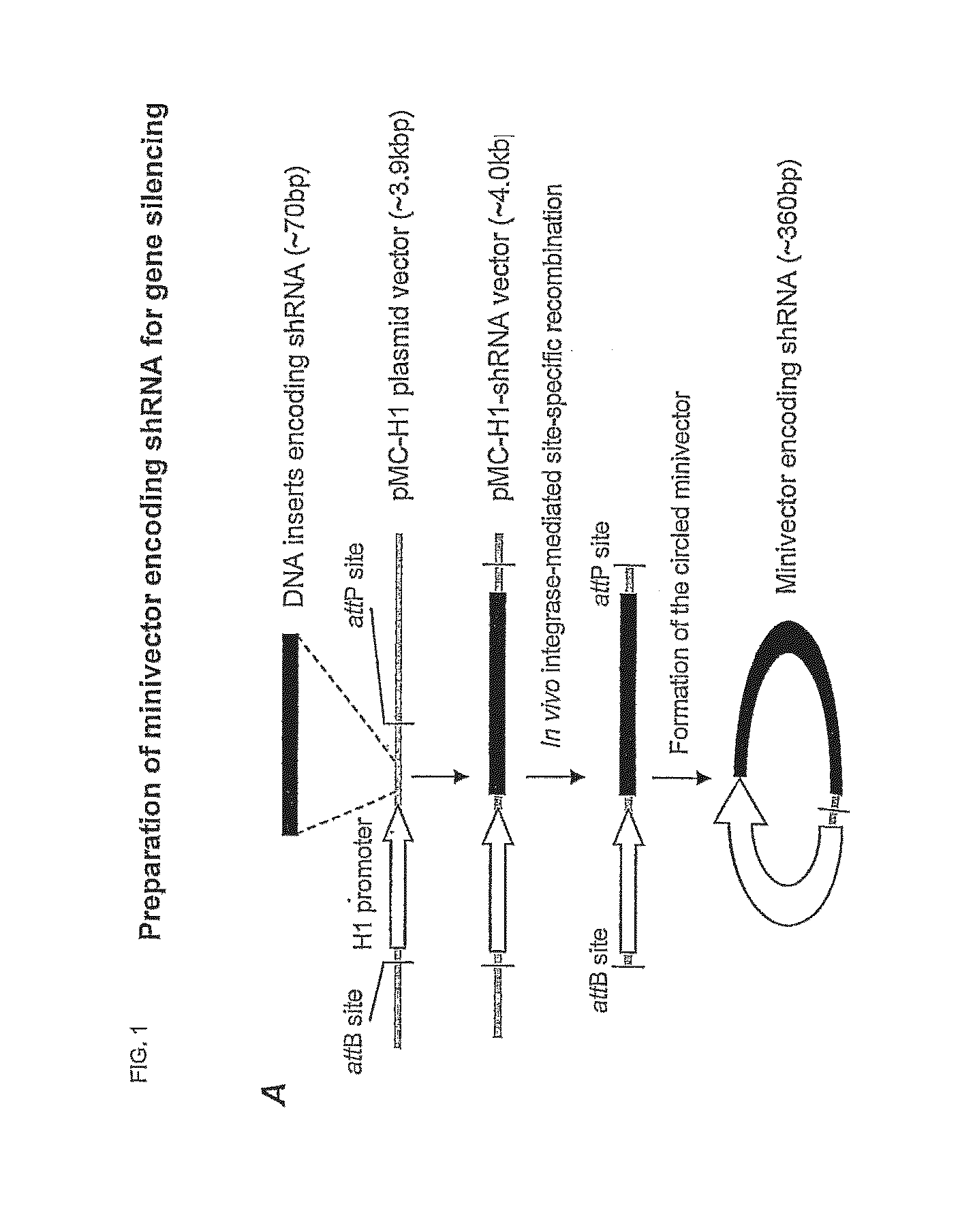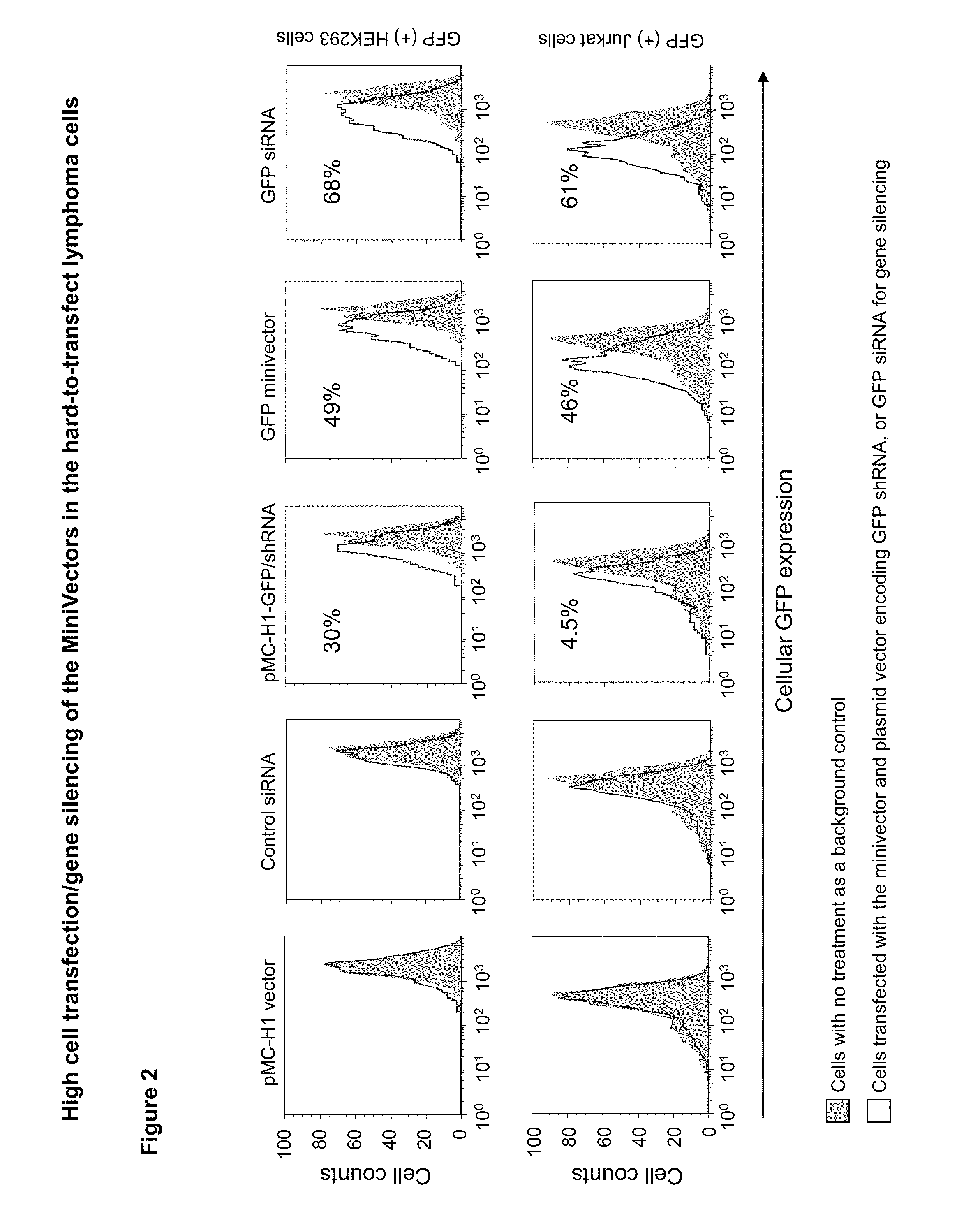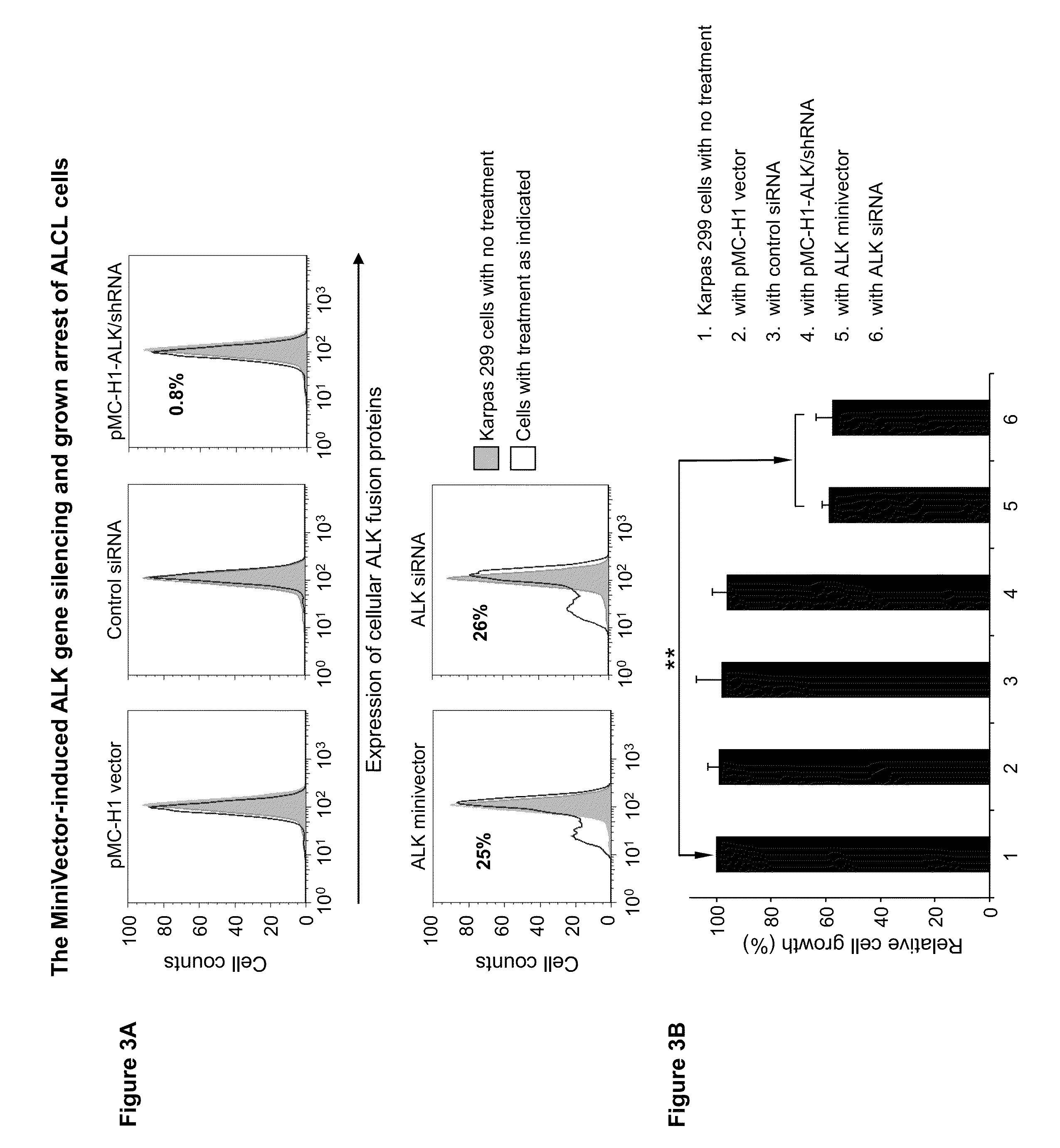Supercoiled minicircle DNA for gene therapy applications
a technology of dna and gene therapy, applied in the direction of viruses/bacteriophages, artificial cell constructs, gene material ingredients, etc., can solve the problems of limited therapeutic potential, high delivery efficiency, and failure to achieve the effect of silencing expression, prophylaxis, and silencing expression
- Summary
- Abstract
- Description
- Claims
- Application Information
AI Technical Summary
Benefits of technology
Problems solved by technology
Method used
Image
Examples
example 1
Cell Transfection and Gene Silencing Materials and Methods
Oligonucleotide Synthesis and Minivector Preparation
[0044]For GFP silencing the synthetic siRNAs were purchased with paired control siRNA (catalog # AM4626 from Ambion, Foster city, Calif. ). The siRNA for the ALK gene was synthesized according to the reported sequences11 with sense: (SEQ ID NO: 1) 5′-CACUUAGUAGUGUACCGCCtt-3′ and (SEQ ID NO: 2) antisense: 5′-GGCGGUACACUACUAAGUGtt-3′by Ambion. The parent plasmid used to generate the shRNA expressing Minivector was generated as follows. KasI and HindIII restriction sited were engineered into pMC339-BbvCI (Fogg et al. 2006). A H1 promoter was subcloned into the pMC vector by inserting the KasI / HindIII fragment containing H1 promoter and shRNA expressing sequence from pSUPER-CCR5shRNA-3 (refs) between the KasI and HindII sites. A BglII site was subsequently engineered in front of the shRNA expression sequence to generate pMV-CCR5shRNA3-BglII. This allows the shRNA expression sequ...
example 2
Minivector Encoding shRNA Blocks Gfp Expression in Human Fibroblasts
[0058]The transfection efficiency of minicircles encoding shRNA targeted to GFP (minicircle shRNA-GFP) was assayed in human embryonic kidney cells that stably express GFP (293FT / GFP). Minivector encoding shRNA against CCR5, which is not found in 293FT cells, served as a negative control. Following transfection using lipofectamine, GFP expression was quantified using fluorescence activated cell sorting. Compared to cells transfected with the control minivector, which had no effect on GFP-mediated fluorescence, cells receiving minivector showed decreased fluorescence in a dose- and time-dependent manner with up to 44% decreased fluorescence (FIG. 4). Therefore, minivectors encoding shRNA against the GFP gene appear to be processed through the Dicer pathway as schematized in FIG. 5 to silence GFP expression.
[0059]Minivector encoding shRNA silences GFP expression in Jurkat lymphoma cells more effectively than a conventi...
example 3
Transfection of Human Dendritic and T Cells
[0061]Minivector encoding Gaussia luciferase transfected human dendritic cells and activated T-cells with high efficiency. A system was established to measure the ability of activated T-cells to combat tumors (Ahmed et al. 2007, J Immunother. 30(1):96-107). A short luciferase gene, Gaussia luciferase, was cloned into the minivectors to make mvGLuc. Despite being one of the smallest easily trackable genes available, the luciferase gene resulted in relatively large minivectors ˜1.2 kb, which are far larger than the ˜385 by minicircles used in the experiments that showed regulation of GFP expression above. The GLuc-encoding minicircles are, however, still smaller than typical DNA plasmid vectors and, importantly, lack any bacterial sequences for selection or replication. As shown, GLuc-delivery into human dendritic cells (DCs) (FIG. 7A) and T-cells (FIG. 7B) resulted in higher gene expression in comparison to the regular plasmid. These results...
PUM
| Property | Measurement | Unit |
|---|---|---|
| pH | aaaaa | aaaaa |
| pressure | aaaaa | aaaaa |
| power output | aaaaa | aaaaa |
Abstract
Description
Claims
Application Information
 Login to View More
Login to View More - R&D
- Intellectual Property
- Life Sciences
- Materials
- Tech Scout
- Unparalleled Data Quality
- Higher Quality Content
- 60% Fewer Hallucinations
Browse by: Latest US Patents, China's latest patents, Technical Efficacy Thesaurus, Application Domain, Technology Topic, Popular Technical Reports.
© 2025 PatSnap. All rights reserved.Legal|Privacy policy|Modern Slavery Act Transparency Statement|Sitemap|About US| Contact US: help@patsnap.com



